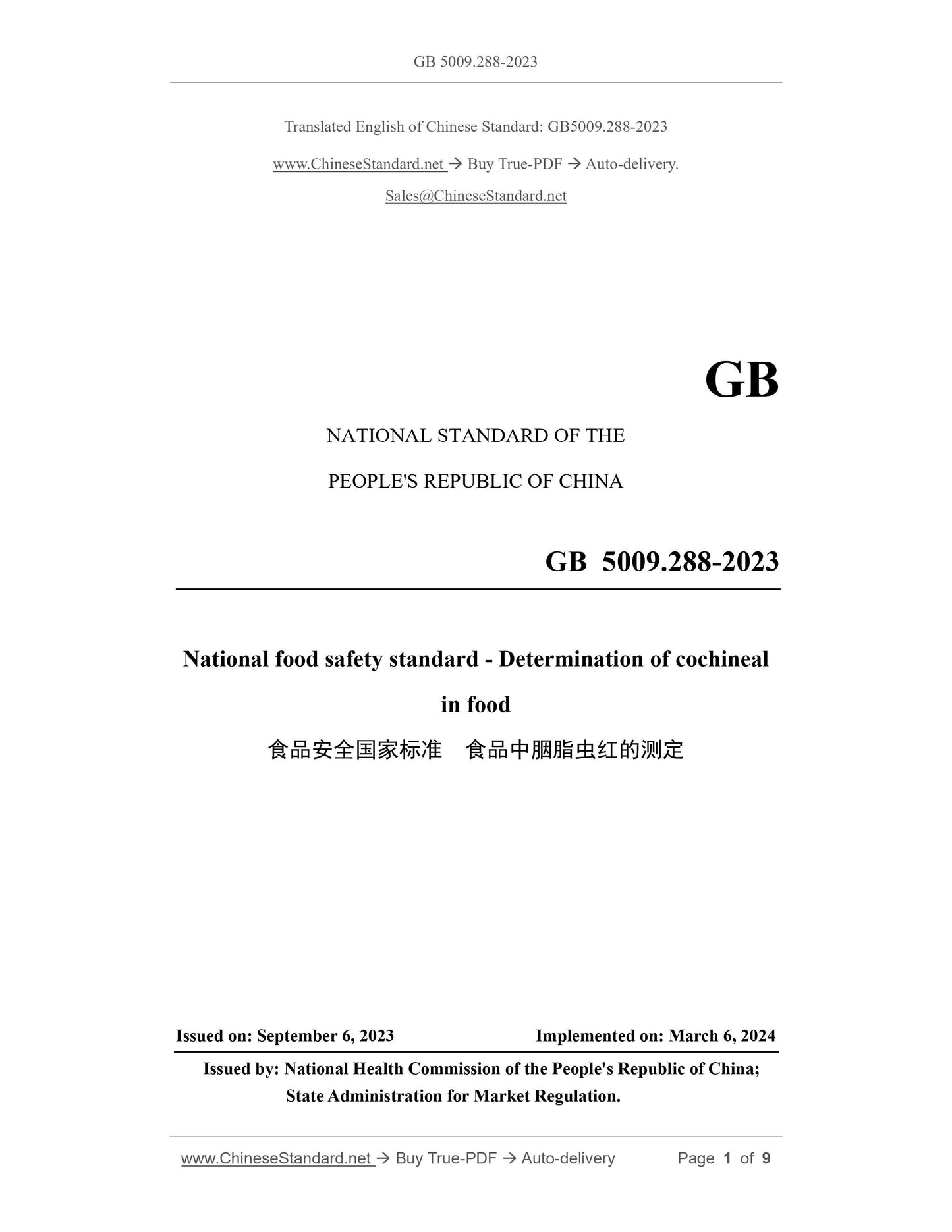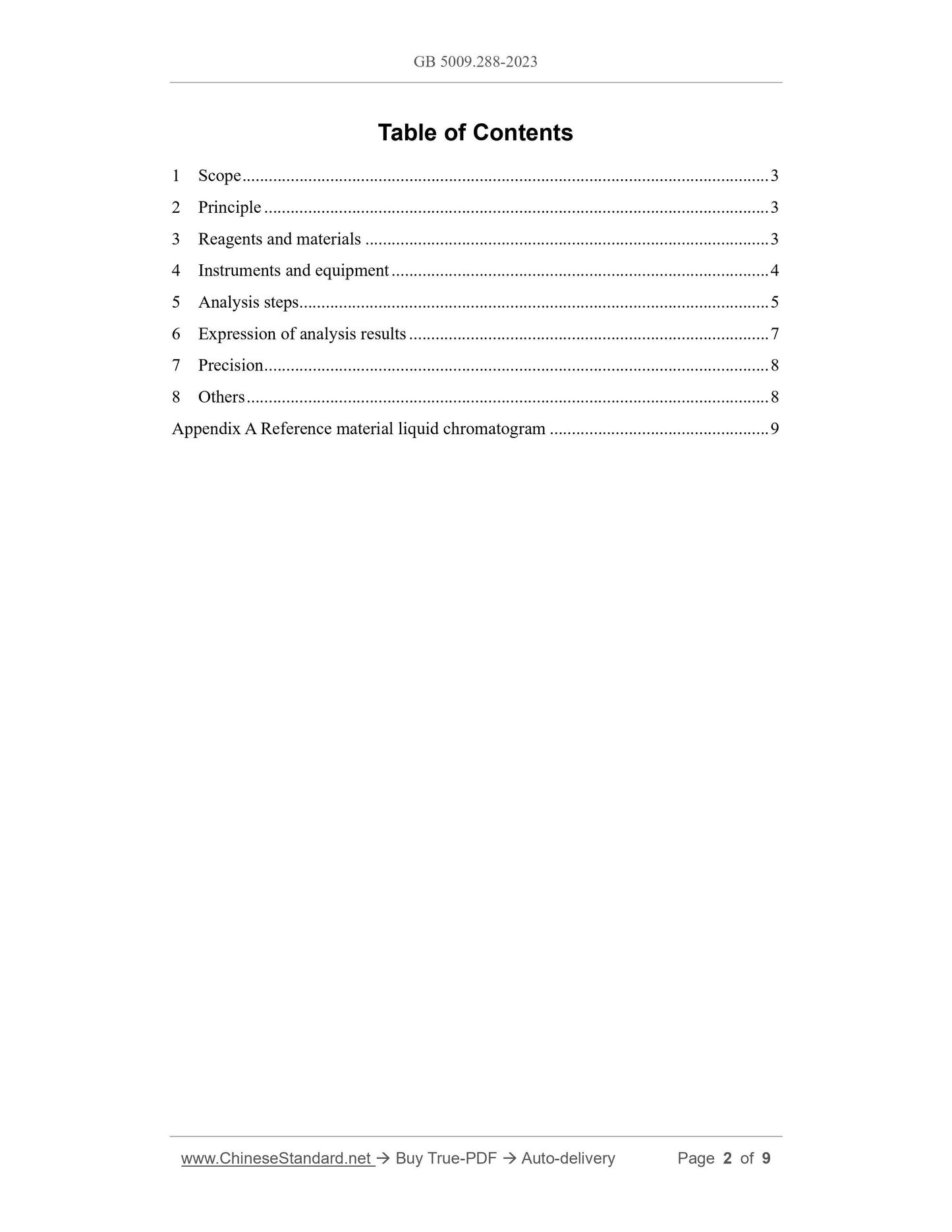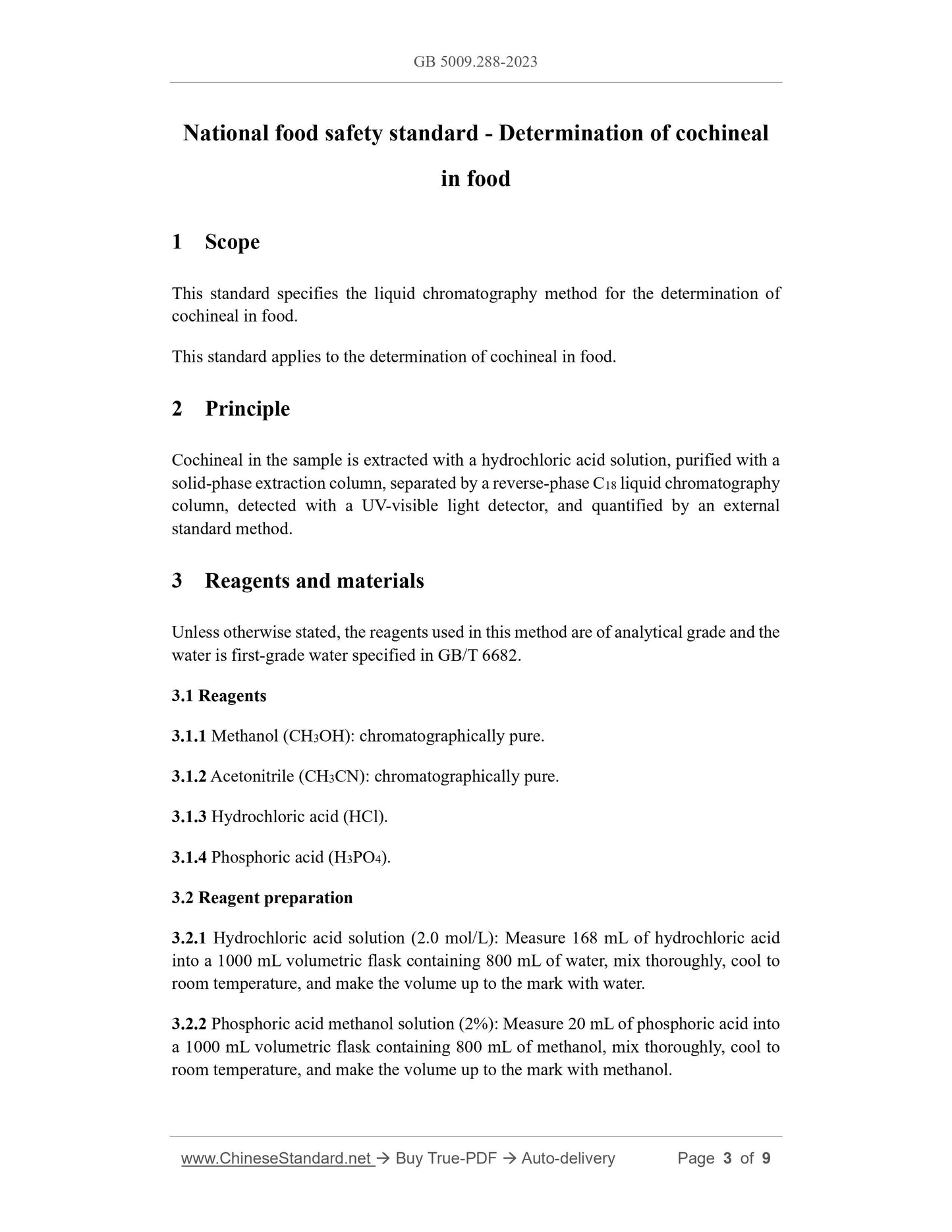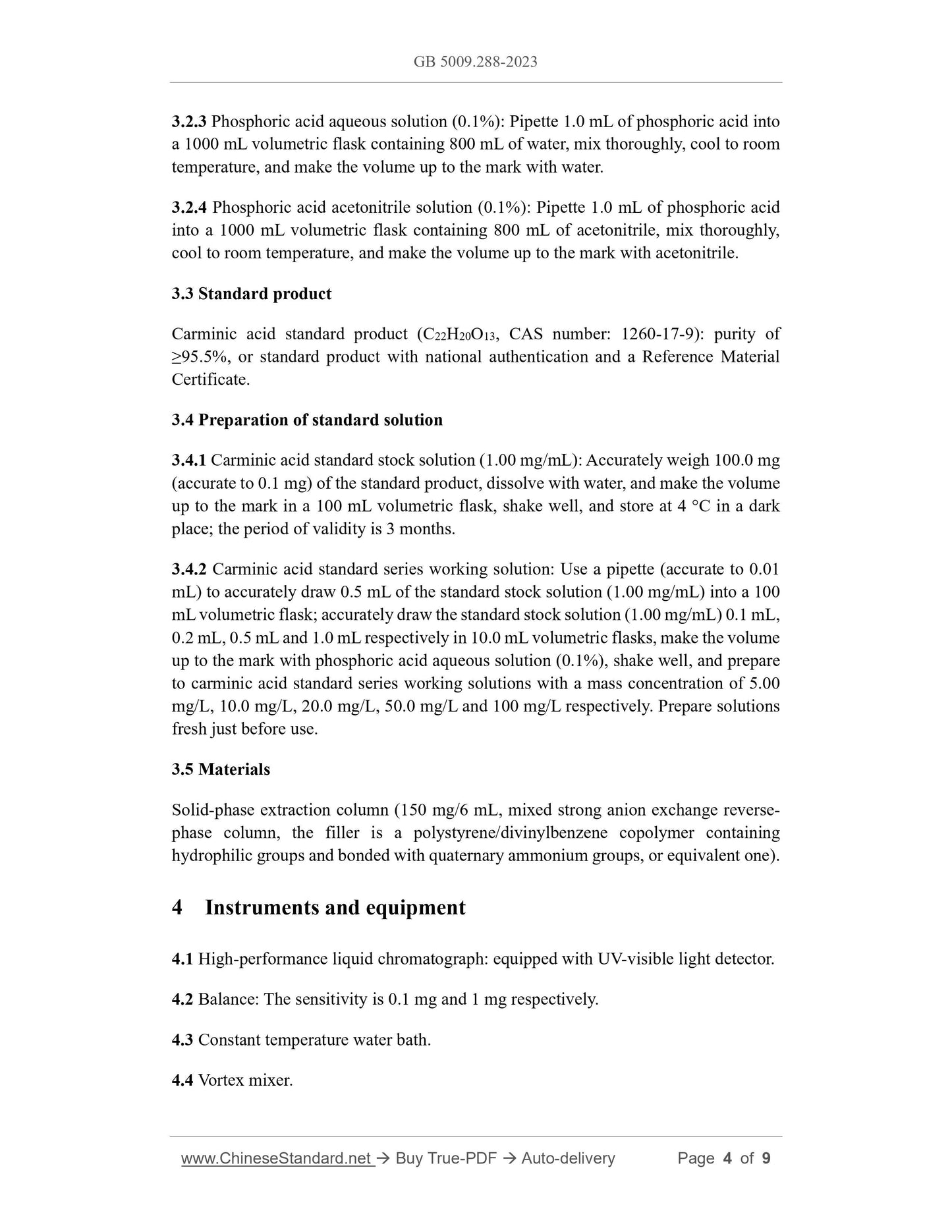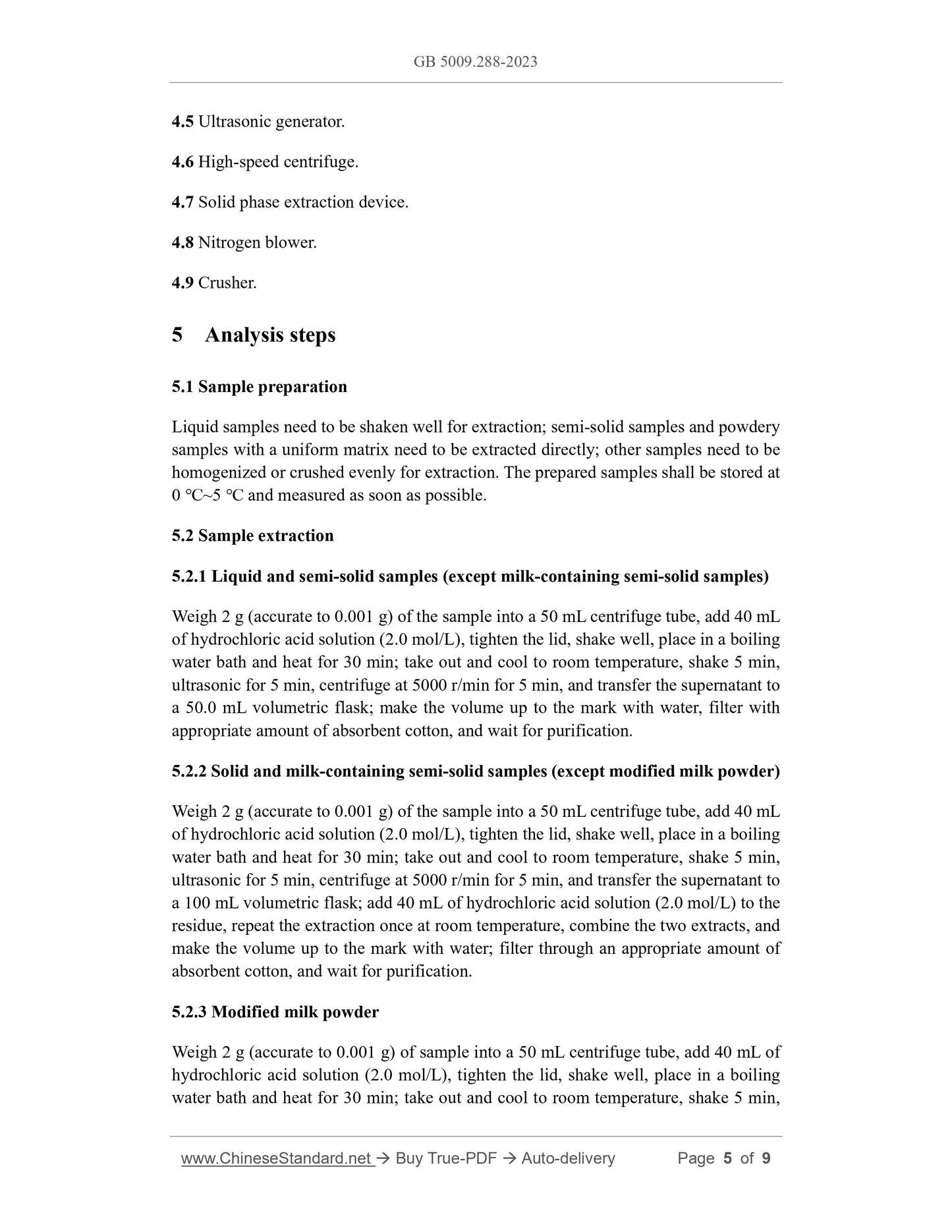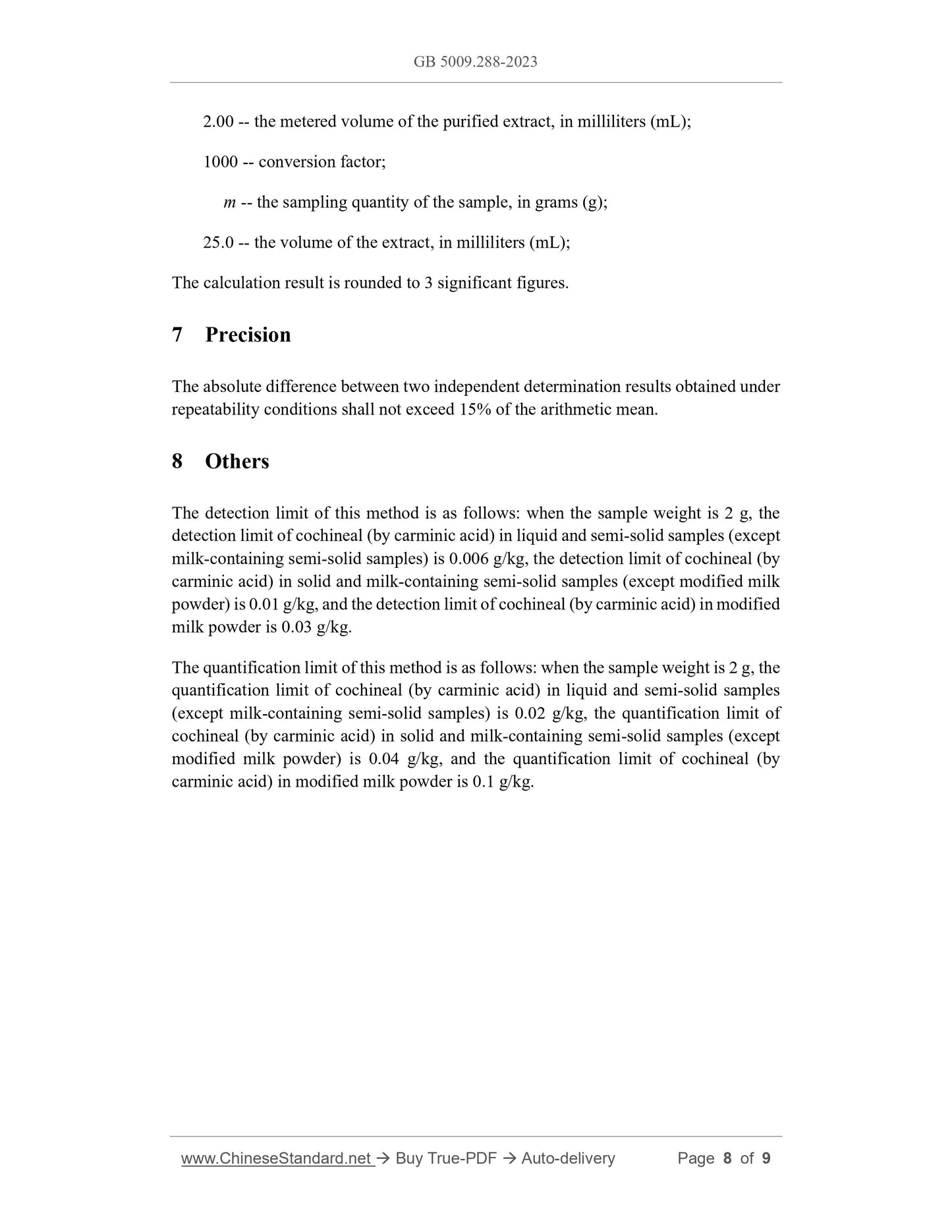1
/
of
6
www.ChineseStandard.us -- Field Test Asia Pte. Ltd.
GB 5009.288-2023 English PDF
GB 5009.288-2023 English PDF
Regular price
$140.00
Regular price
Sale price
$140.00
Unit price
/
per
Shipping calculated at checkout.
Couldn't load pickup availability
GB 5009.288-2023: National food safety standard - Determination of carmine cochineal in foods
Delivery: 9 seconds. Download (and Email) true-PDF + Invoice.Get Quotation: Click GB 5009.288-2023 (Self-service in 1-minute)
Newer / historical versions: GB 5009.288-2023
Preview True-PDF
Scope
This standard specifies the liquid chromatography method for the determination ofcochineal in food.
This standard applies to the determination of cochineal in food.
Basic Data
| Standard ID | GB 5009.288-2023 (GB5009.288-2023) |
| Description (Translated English) | National food safety standard - Determination of niacin and niacinamide in foods |
| Sector / Industry | National Standard |
| Classification of Chinese Standard | X09 |
| Word Count Estimation | 15,119 |
| Date of Issue | 2023-09-06 |
| Date of Implementation | 2024-03-06 |
| Issuing agency(ies) | National Health Commission of the People's Republic of China, State Administration for Market Regulation |
| Summary | This standard specifies the determination method of niacin and nicotinamide in food. The first method of this standard applies to prepared milk powder, special dietary foods (excluding partially hydrolyzed milk protein formulas, deeply hydrolyzed milk protein formulas or amino acid formulas and formulas for special medical purposes of infant formulas for amino acid metabolism disorders) and special purpose beverages Determination of niacin and nicotinamide, the second method is suitable for the determination of niacin (or nicotinamide) in food. |
Share
